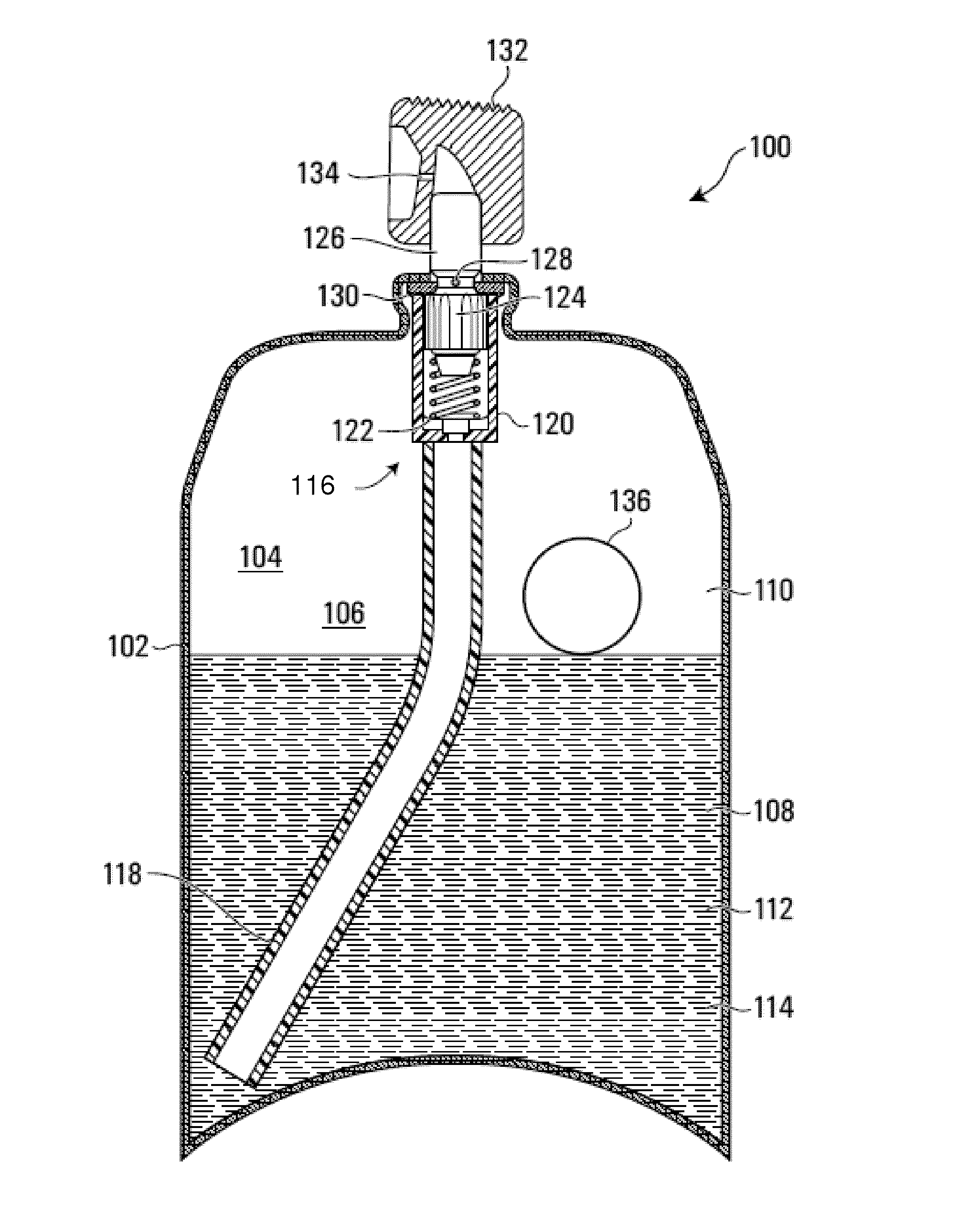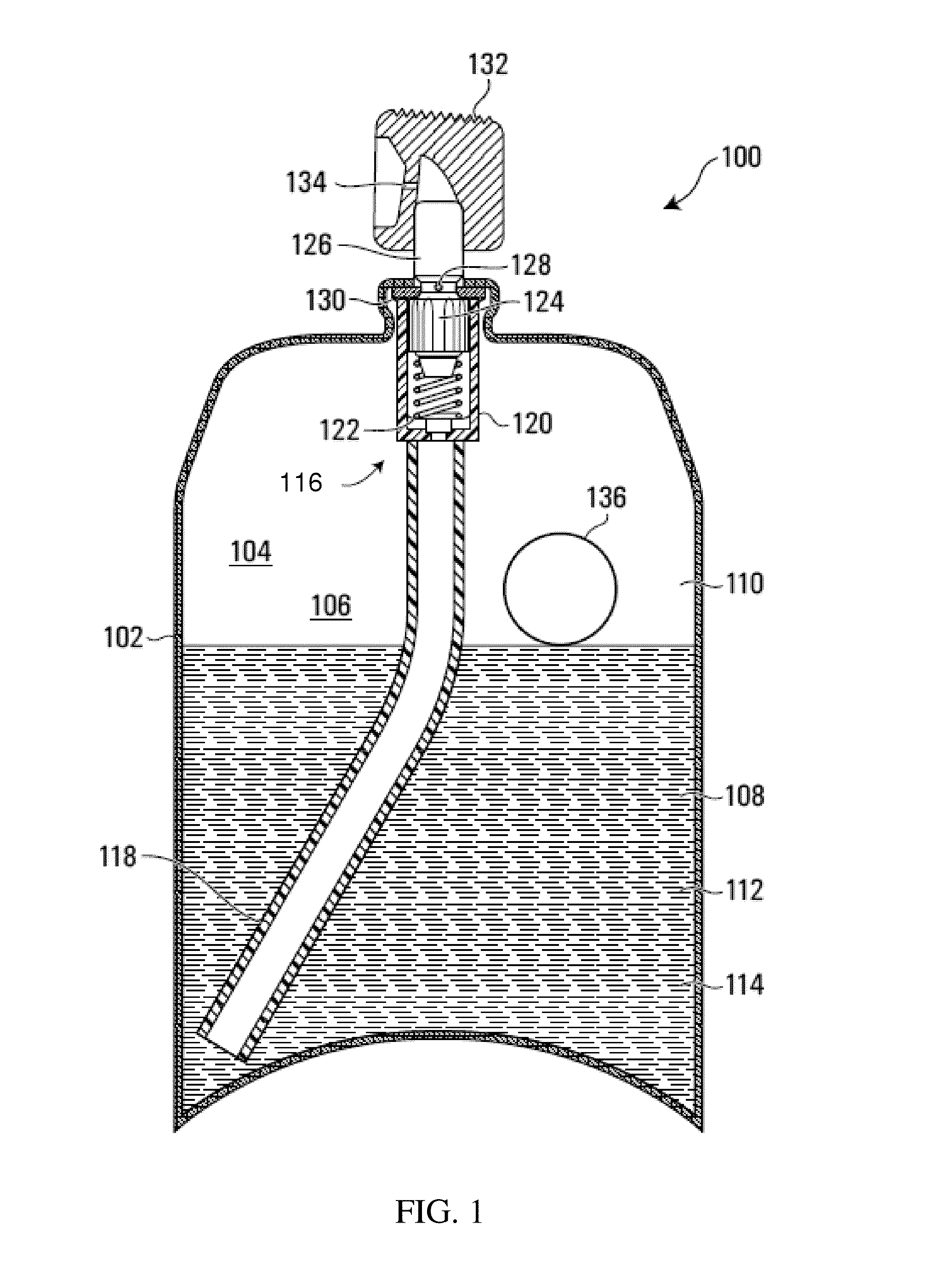Spray apparatuses, uses of diatomaceous earth, and methods of controlling insect populations
a technology of diatomaceous earth and spraying apparatus, which is applied in the direction of lighting and heating apparatus, combustion types, and other chemical processes, can solve the problems of many insects, such as insects, becoming pests in many parts of the world, and bedbug infestation of a building, for example, can be very costly
- Summary
- Abstract
- Description
- Claims
- Application Information
AI Technical Summary
Benefits of technology
Problems solved by technology
Method used
Image
Examples
experiment # 1
[0071]Experiment #1
[0072]In one experiment (“Experiment #1”), small plastic Petri dishes available from Gelman Sciences™, each about 5.0 cm or about 2.0 inches in diameter, were used in bioassays. A small opening of about 1.5 cm (or about 0.6 inches) in diameter was cut in the lid and closed with a piece of gauze to allow air for bedbug breathing. The Petri dishes were lined with a filter paper about 4.25 cm (or about 1.7 inches) in diameter. Diatomaceous earth was weighed and spread uniformly over the filter paper with forceps. Ten adult field-collected common bedbugs (Cimex lectularius) were introduced in each of the Petri dishes, and the lids were placed over them to prevent their escape. Petri dishes were transferred in a plastic box lined with paper towels sprayed with water to maintain humidity in the box. Experiments were conducted at room temperature, and mortality was noted 24, 48, 72, and 96 hours after the bedbugs were introduced into of the Petri dishes. Four concentrati...
experiment # 2
[0075]Experiment #2
[0076]In another experiment (“Experiment #2”), mortality of CELATOM™ MN-51 was compared with the diatomaceous earth products known as Alpine™ Dust, MotherEarth™ D, and PRO-ACTIVE™. The various products were applied with forceps and weighed on a small filter paper, which was then placed in a Petri dish (about 5.0 cm or about 2 inches diameter). Common bedbugs (Cimex lectularius) were introduced in the various Petri dishes, and mortality was assessed in each of the Petri dishes after 24 hours and after 48 hours. Four to five concentrations of each product were used, the concentrations ranging from 0.25 mg to 6 mg, and there were three replications of between 9 and 11 bedbugs (adults or last instar nymphs) in each replication. A probit analysis was used to calculate LC50 and LC95 (lowest lethal concentrations sufficient to kill 95% of the bedbugs) values and 95% confidence intervals (“CIs”) for the LC50 and LC95 values, as shown in Table 10 below.
TABLE 10LC50, LC95, ...
experiment # 3
[0077]Experiment #3
[0078]In another experiment (“Experiment #3”), six Petri dishes (each about 5.0 cm or about 2.0 inches in diameter) were sprayed with an aerosol including CELATOM™ MN-51 using an apparatus similar to the spray apparatus 100 shown in FIG. 1, and a thin coating of the CELATOM™ MN-51 remained after drying; those six Petri dishes were used for an experimental group. An additional six Petri dishes (each 5.0 cm or about 2.0 inches in diameter) did not receive the aerosol or the diatomaceous earth; those six Petri dishes were used for a control group. Five adult common bedbugs (Cimex lectularius) were introduced with forceps into each of the 12 Petri dishes, and lids were applied to prevent the bedbugs from escaping. Mortality was assessed 3, 15, 18, and 24 hours after the bedbugs were introduced into the Petri dishes, and there was no mortality in the control group. Mortality in the experimental group is shown in Table 11 below.
TABLE 11Number of bedbugs dead from aeroso...
PUM
 Login to View More
Login to View More Abstract
Description
Claims
Application Information
 Login to View More
Login to View More - R&D
- Intellectual Property
- Life Sciences
- Materials
- Tech Scout
- Unparalleled Data Quality
- Higher Quality Content
- 60% Fewer Hallucinations
Browse by: Latest US Patents, China's latest patents, Technical Efficacy Thesaurus, Application Domain, Technology Topic, Popular Technical Reports.
© 2025 PatSnap. All rights reserved.Legal|Privacy policy|Modern Slavery Act Transparency Statement|Sitemap|About US| Contact US: help@patsnap.com



